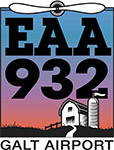Learning how to trim an aircraft correctly is an essential basic skill that all pilots need to master early in their training. Recently, I’ve come across several pilots who are confused about the proper use of the elevator trim so I hope this article goes some way to addressing some of the frequent misunderstandings.
Airplanes can have elevator, rudder and aileron trim. This article will focus on elevator trim which is the most commonly used but the same principles apply to the trim systems on the other control surfaces.
A trim system is a device used to adjust aerodynamic forces on a control surface so the pilot doesn’t have to maintain constant pressure on the flight controls. Their only function is to minimize the workload on the pilot.
It is important to remember the purpose of the trim and understand that it is a secondary flight control. Trim must not be used to adjust your airspeed or initiate a climb or descent—it is not a substitute for the elevator.
When should you use the trim? You should be applying trim every time you change the aircraft configuration—such as increasing or decreasing power, climbing, descending, leveling off, lowering or raising the flaps, and in steep turns. When the airplane is trimmed perfectly it will retain the attitude you set it to (and therefore maintain the same airspeed) if you take your hands off the controls.
Here is an example of the proper technique for using trim when leveling off after a climb:
-
-
- First, use the stick or yoke to establish the correct attitude needed to maintain level flight. Initially this may require significant continuous forward pressure to prevent further climbing.
- Next, adjust the power to the desired RPMs (or manifold pressure in an airplane with a constant speed propeller).
- Allow time for the airspeed to stabilize. Generally wait at least five seconds before touching the trim, maybe longer in a faster aircraft. One very common mistake is adjusting the trim too soon.
- Then move your elevator trim control forward (towards the nose) until the airplane remains level and maintains the desired attitude without any control input from you.
-
The steps will be the same for trimming the aircraft for any configuration change. Apply the desired primary flight control inputs first, next adjust power and/or extend/retract flaps (if required), allow the aircraft to stabilize, then, and only then, use the trim.
Beth Rehm, CFII

